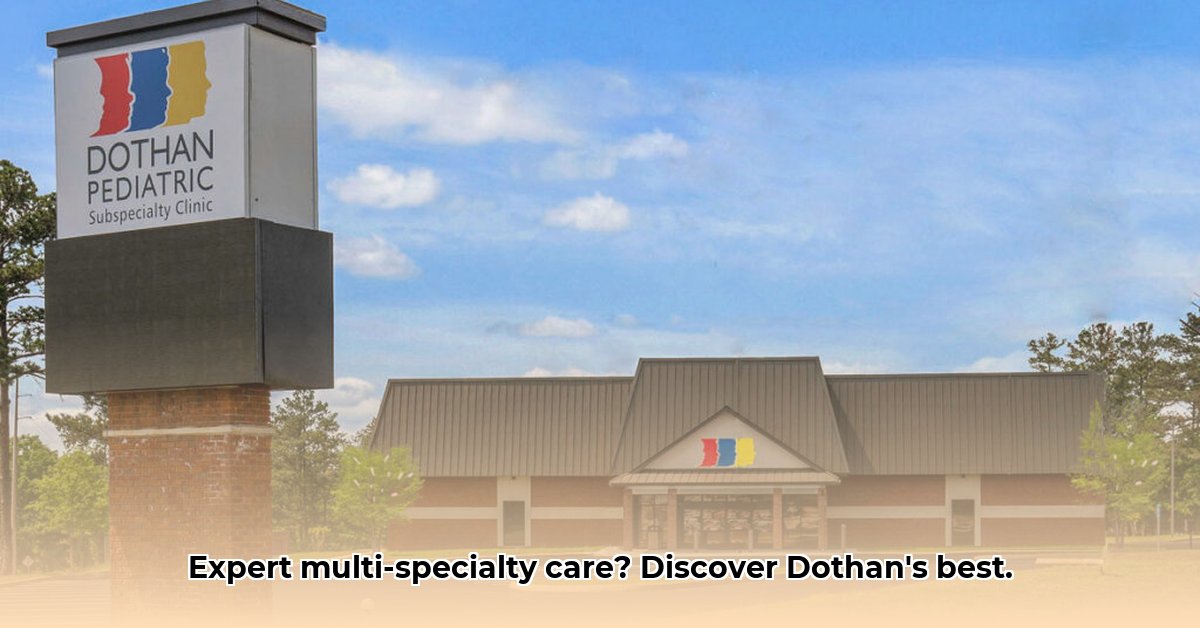
A Case Study of Dothan Specialty Clinic's Growth, Challenges, and Future Prospects
Dothan Specialty Clinic (DSC), located in Dothan, Alabama, has provided multi-specialty healthcare services to the Wiregrass region since 1975. This case study analyzes DSC's historical trajectory, current challenges, and potential avenues for future growth, offering actionable recommendations for enhanced operational efficiency and patient care.
Background: A History of Growth and Adaptation
DSC initially focused on cardiology, but has expanded to include dermatology and urology, and potentially more, demonstrating adaptability to evolving community needs. However, discrepancies exist in publicly available information regarding the clinic's current size and range of specialties. One source cites a focus on cardiology, dermatology, and urology, while another indicates 44 physicians spanning 12 specialties. This inconsistency highlights the need for internal data standardization and accurate reporting. This initial growth showcases a responsiveness to the evolving healthcare landscape of the Wiregrass region.
Analysis: Strengths, Weaknesses, and Opportunities
Strengths: DSC's longevity signifies a strong foundation and established patient base. Its multi-specialty approach offers convenience and comprehensive care within a single location.
Weaknesses: Data inconsistencies regarding the clinic's physician count and service offerings necessitate improved internal data management. Furthermore, information regarding patient satisfaction, wait times, and technological infrastructure (e.g., EHR systems, telehealth capabilities) is currently limited. This lack of readily available information hinders a comprehensive performance evaluation.
Opportunities: Addressing the data inconsistencies and improving transparency would enhance the clinic's public profile and enable more effective strategic planning. Investing in advanced technology, such as updated EHR systems and telehealth platforms, could improve efficiency and expand access to care, particularly in a geographically dispersed rural area. A detailed analysis of the clinic's patient demographics could inform targeted service expansions and marketing efforts. Benchmarking against other multi-specialty clinics in the region would identify areas of strength and opportunities for improvement.
Actionable Recommendations
Short-Term Goals (within 1 year):
Implement a Data Management System: Standardize data collection and reporting across all departments to ensure consistent and accurate information regarding physician counts, services offered, and patient demographics. Efficacy Metric: Achieve 95% data accuracy within six months.
Enhance Patient Communication: Implement a centralized appointment scheduling system and a patient portal to facilitate online scheduling, communication, and access to medical records. Efficacy Metric: Increase online appointment scheduling by 50% within one year.
Conduct Patient Satisfaction Surveys: Regularly assess patient satisfaction through surveys and feedback mechanisms to identify areas for improvement in patient experience. Efficacy Metric: Achieve an average patient satisfaction score of 4.5 out of 5 within one year.
Long-Term Goals (within 3-5 years):
Invest in Technology Upgrades: Implement a state-of-the-art electronic health record (EHR) system and expand telehealth capabilities to increase access to care and improve operational efficiency. Efficacy Metric: Achieve 10% reduction in operational costs and a 20% increase in patient access via telehealth within three years.
Develop a Comprehensive Strategic Plan: Conduct a thorough market analysis to identify underserved healthcare needs in the Wiregrass region and develop a strategic plan for service expansion based on these findings. Efficacy Metric: Successfully launch one new specialty service based on market analysis within two years.
Strengthen Community Engagement: Increase community outreach through health education initiatives and partnerships with local organizations to improve awareness of clinic services and build stronger connections. Efficacy Metric: Achieve a 25% increase in community engagement activities within two years.
Conclusion
Dothan Specialty Clinic possesses a strong foundation built on decades of service. However, addressing data inconsistencies, investing in technology, and enhancing patient communication are crucial for sustained growth and success. By implementing these recommendations, DSC can optimize its operations, strengthen its position in the Wiregrass community, and ensure continued provision of high-quality multi-specialty care. Proactive adaptation to changing healthcare dynamics, coupled with a commitment to community engagement, will drive long-term success.